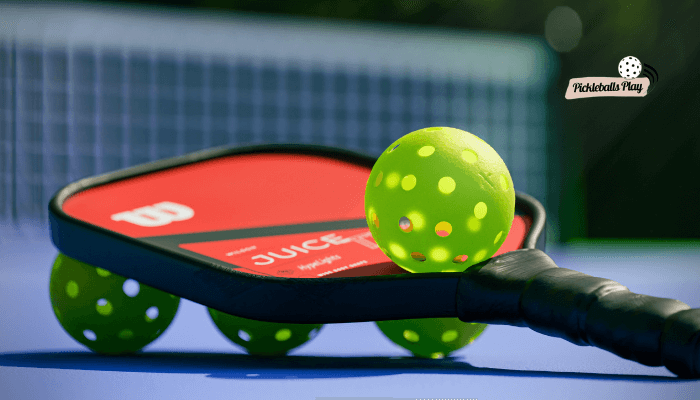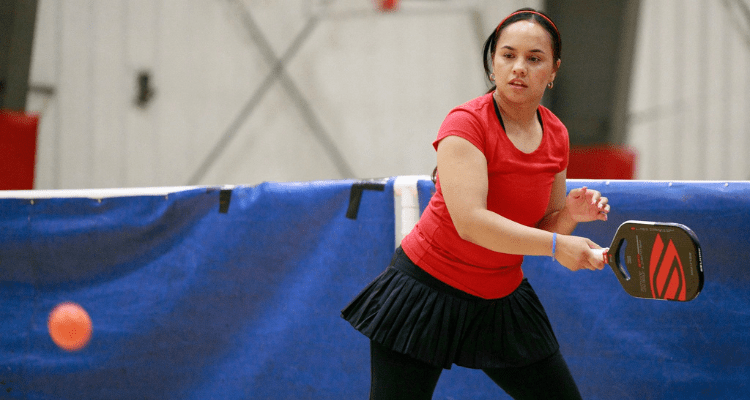Pickleball is a popular paddle sport that combines elements of tennis, badminton, and ping pong. One of the unique rules in pickleball is the “double bounce” rule. This rule states that if the ball bounces twice on one side before being returned, the point is awarded to the opponent.
The double bounce rule adds an interesting dynamic to pickleball gameplay. It rewards offensive play and aggressive returns while also requiring precision and consistency. Let’s explore why this rule exists and how it impacts matches:

Origins of the Double Bounce Rule
The double bounce rule was instituted to speed up gameplay. Without it, long rallies of soft, careful returns would slow down the game considerably. The rule encourages authoritative shots that apply pressure. It also tests a player’s ability to react quickly on the run or stretched wide. Mastering control despite fast exchanges is critical in high-level pickleball.
Applying the Double Bounce Rule
The double bounce rule sounds simple – two bounces and you lose the point. However, certain specifications add complexity:
- The bounces must occur without the ball being returned.
- The bounces must happen on one side consecutively.
- The ball can bounce once on each side during a point without a penalty.
The key is recognizing when that second bounce happens on one side without an intervening return shot. Keeping this rule top of mind alerts players to attack shorter balls before they bounce twice.
Double Bounce Situations
Certain situations commonly lead to double bounces:
- Lobs – High shots landing deep in the backcourt often bounce twice before the defender can run them down. Dropping lobs short utilizes the rule.
- Angles – Balls hit at sharp crosscourt angles can elude the opponent’s reach for a double bounce. Targeting extreme angles exploits this.
- Poaches – A poach is when you cross over to your partner’s side for a surprise return. The sudden offense can set up a double bounce.
In each case above, the objective is landing the ball where it pressures the opponent most. Forcing a foot fault, weak return, or double bounce wins the point.

Impacts of the Double Bounce Rule
The double bounce rule uniquely impacts pickleball strategy and scoring:
- Aggressive returns – Attacking balls coming off weak shots to take offense is incentivized before a double bounce.
- Advanced coordination – Teams with seamless communication have better court coverage to avoid double bounces.
- Comebacks – The 2-bounce limit means comebacks at mid-point are less likely than in some racquet sports.
- Lower scores – The scoring incentivizes fewer mistakes, as double bounces end points abruptly.
The rule ultimately rewards decisive, accurate shot-making. Mindlessly keeping balls in play is far less effective than controlling pace and locations.
FAQs
What if the ball bounces twice at the same time on a serve?
If the served ball contacts anything before bouncing twice, the ball remains in play. So hitting a serve that immediately bounces twice means the server loses the point.
Can the ball bounce twice on the serve return?
Yes, the double bounce rule only takes effect after the 2nd shot. So on the serve return specifically, two bounces are permitted before hitting.
What if the ball rolls along the ground?
When assessing double bounces, treat a rolling ball the same as a bouncing ball. So, if a slow roller stays low and grounds twice without being touched, it still concludes the point.
Can you intentionally catch a ball bouncing twice?
No, manually stopping a bouncing ball counts as playing the ball and forfeits the point. The ball itself must make two uncontrolled bounces.
What if the ball hits a player on the 2nd bounce?
Contacting a player while still airborne on the 2nd bounce is not a fault. The ball must bounce a 2nd time on the playing surface or floor to invoke the double bounce rule. So if a player is hit before the ball actually grounds, play continues.
Conclusion
The unique double bounce rule in pickleball affects everything from serve returns to poaches to lob shots. It rewards decisiveness and aggressiveness with a strict 2-bounce limit per side. Players must master quick responses, court coverage, and angle play if they want to utilize rule quirks to their advantage.
With practice, pickleballers can leverage the double bounce rule to apply pressure and force mistakes. Just remember – strike the ball decisively on your opportunity, or a double bounce could abruptly make you pay! This singular rule adds much of the speed, action, and enjoyment that makes pickleball an addicting game.




